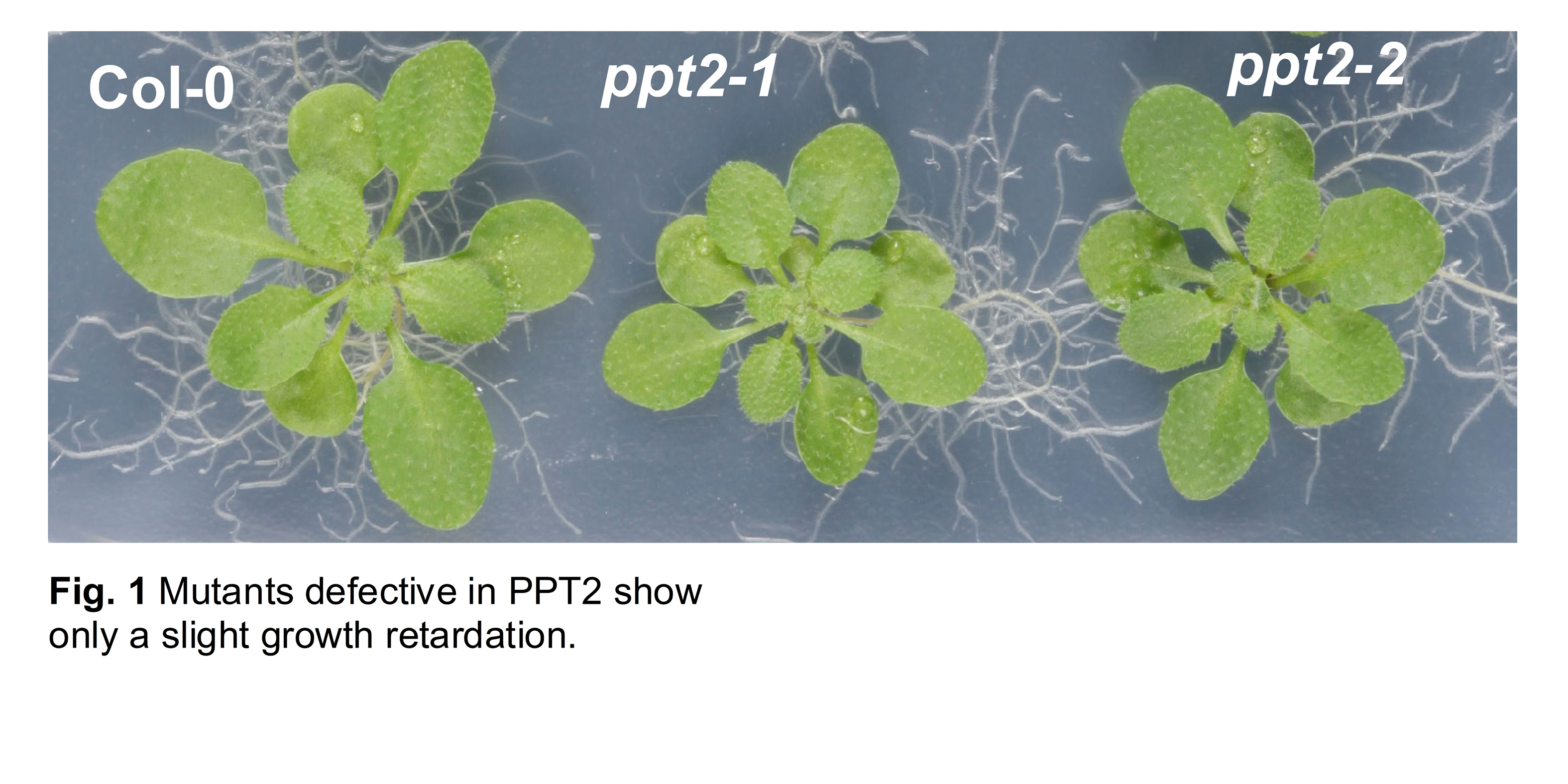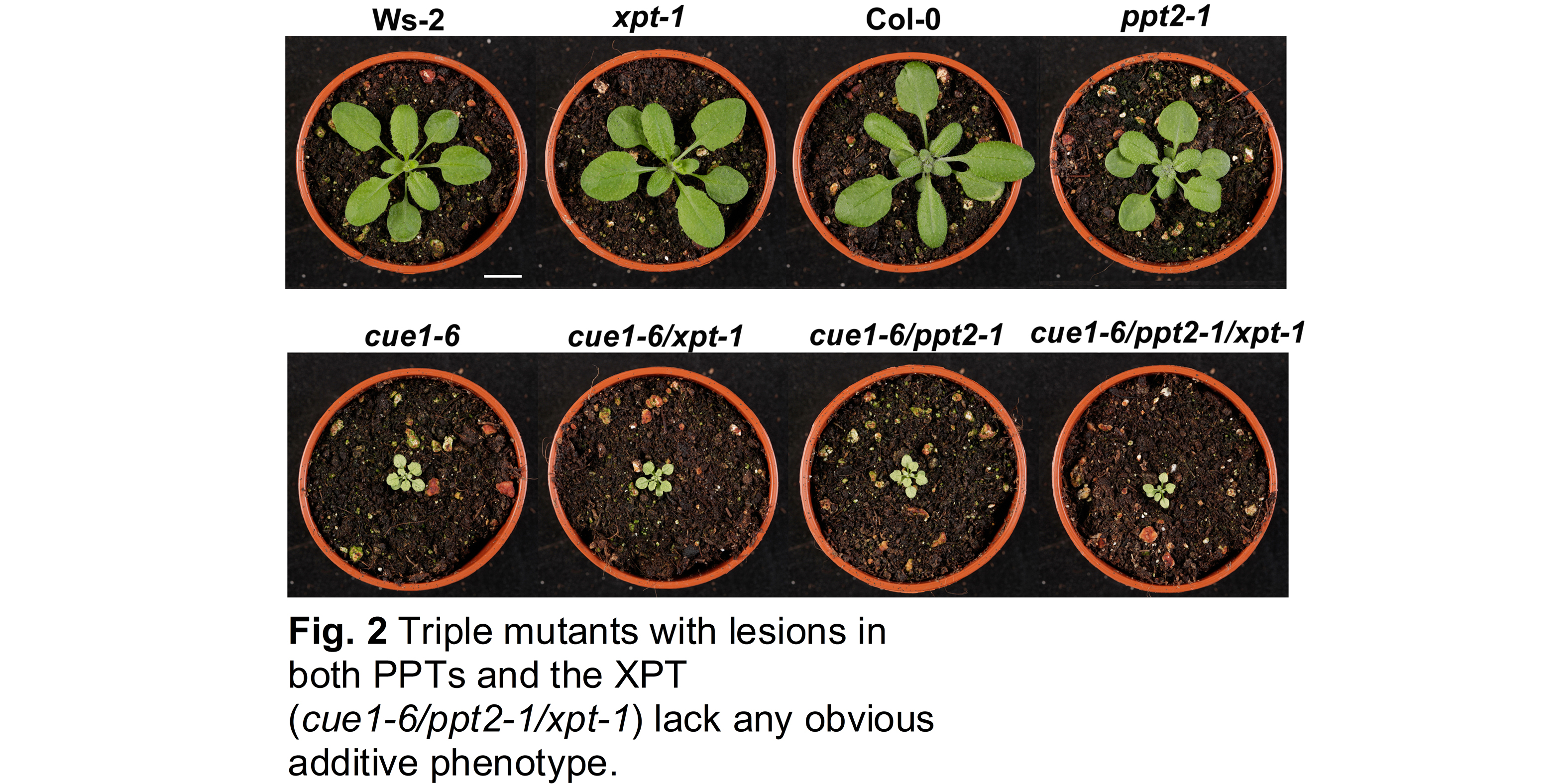Phosphoenolpyruvate/phosphate translocator - Part 3
A complete block in PEP import into plastids
In contrast to the severe phenotype of the cue1 mutant (see Part 1 and Part 2), a knockout of PPT2 resulted only in a mild growth inhibition of the respective ppt2 mutant alleles (Hilgers et al., 2018; Fig. 1).
Beside of both PPTs other phosphate translocators have been shown to be capable of transporting PEP to a certain extent (i.e., both GPTs [Niewiadomski et al., 2005] and the XPT [Eicks et al., 2000]). As the XPT gene is ubiquitously expressed in A. thaliana, it is likely that the XPT not only supports the TPT, but also both PPTs. However, triple mutans defective in PPT1, PPT2 and the XPT (cue1-6/ppt2-1/xpt-1) lacked any additive phenotype compared to cue1 (Fig. 2). Moreover, they exhibited a substantial transport capacity for PEP (Hilgers et al., 2018). It is likely that this residual PEP transport activity derives from GPT1, which in leaves is expressed in stomatal guard cells and in the bundle sheath adjacent to the vasculature (Niewiadomski et al., 2005; Kunz et al., 2010).
read more in Part 1 and Part 2
(back to Rainer E. Häusler)

